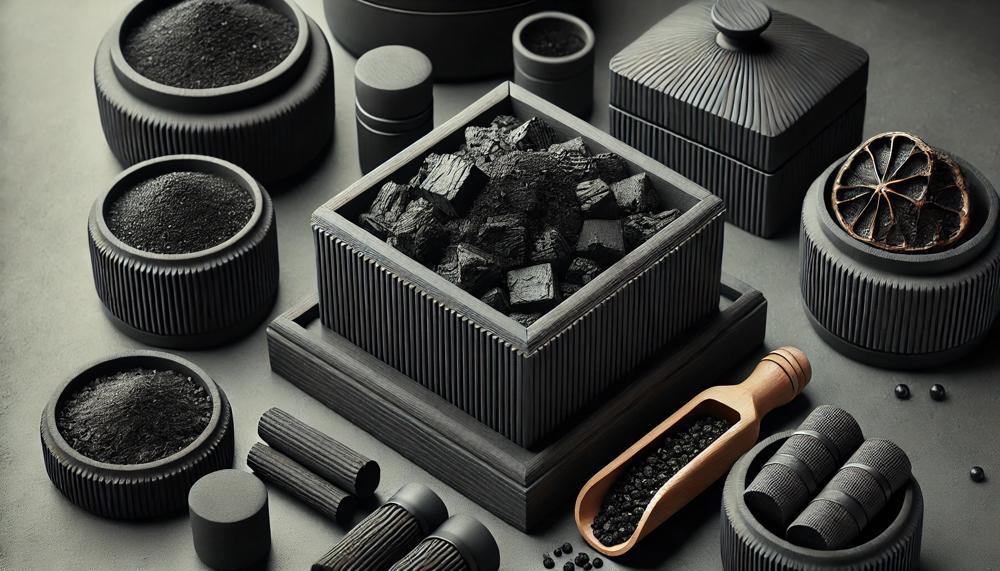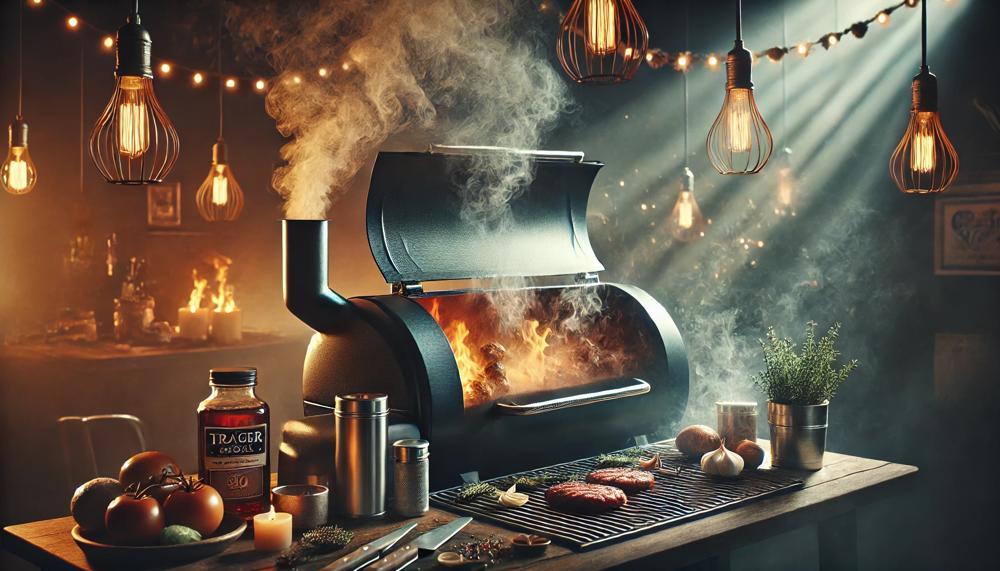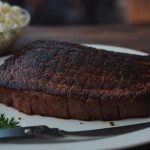Storing charcoal for the long haul isn’t just about tossing it in a random container and hoping for the best. Ensuring your charcoal stays dry and effective over time requires a bit of strategy. Charcoal can absorb moisture, which drastically affects its performance.
This guide will reveal the best methods to store your charcoal, ensuring it’s always ready for your next barbecue or camping trip. Here are the key takeaways for effective long-term charcoal storage:

- Keep It Dry: Moisture is the enemy of charcoal. Ensure your storage method protects against humidity.
- Airtight Containers: Use containers like charcoal caddies, metal trash cans, 5-gallon plastic pails, or plastic storage bins to keep air and moisture out.
- Use Heavy-Duty Bags: Line your container with a heavy-duty trash bag for an extra layer of protection.
- Long-Term Success: A practical example includes storing Kingsford charcoal in a heavy-duty black trash bag inside a 30-gallon metal trash can. This method has proven effective for up to 10 years.
By implementing these methods, you can preserve the quality of your charcoal for years, ensuring it ignites easily and burns consistently whenever you need it.
Contents [show]
Charcoal vs Charcoal Briquettes
| Feature | Traditional Charcoal (Lump Charcoal) | Charcoal Briquettes |
|---|---|---|
| Material | Made from natural hardwood, often lacks uniformity in size and shape. | Consists of compressed charcoal dust and additives, ensuring uniform shapes and sizes. |
| Burning Characteristics | Burns hotter and faster, offering a purer flavour, ideal for searing meat. | Burns more consistently and for longer periods, suitable for extended cooking. |
| Storage Sensitivity | More sensitive to moisture due to its natural composition; requires dry, airtight storage. | Less sensitive to moisture due to additives; more forgiving in varied storage conditions. |
The key differences between traditional charcoal and charcoal briquettes centre on their composition and burning characteristics. Lump charcoal, being a natural product, offers a hotter, quicker burn, making it preferable for grilling enthusiasts who prize a smoky flavour and high heat.
However, its natural variability in shape and size can affect its burn efficiency. On the flip side, charcoal briquettes, thanks to their uniform shape and added binders, provide a more predictable and prolonged burn, ideal for slow-cooking dishes.
In terms of storage, these characteristics profoundly impact how each should be kept for long-term use. Lump charcoal is more prone to absorbing moisture due to its porous nature. This makes it imperative to store it in a dry, airtight environment to preserve its quality. You might consider using a container such as a sealed metal trash can or a plastic bin with a secure lid. Inserting a heavy-duty trash bag before adding the charcoal can further prevent moisture ingress, ensuring the charcoal remains dry and effective for grilling.
Conversely, briquettes are less susceptible to moisture damage due to their manufacturing process, which includes binders and fillers that help resist moisture penetration. Thus, they can be stored with slightly less stringent conditions, though keeping them dry remains crucial to maintain their longevity and efficiency in fuel performance. A simple solution like a plastic storage bin or a charcoal caddy can suffice for effective storage.
Charcoal Shelf Life
Proper storage techniques can significantly extend the shelf life of charcoal, ensuring it remains effective for long-term use. Charcoal, whether traditional lump or briquettes, requires careful handling to maintain its quality and performance. Here’s how you can ensure your charcoal stays ready for the grill:
| Factor | Storage Technique | Importance |
| Moisture | Store charcoal in a dry, airtight container or bag. | Prevents charcoal from absorbing moisture, which can affect its ignition and burn efficiency. |
| Sunlight | Keep charcoal away from direct sunlight. | UV rays can accelerate charcoal degradation and affect its performance over time. |
| Pests and Rodents | Use sealed containers or bins to deter pests. | Protects charcoal from contamination and damage caused by insects or rodents. |
| Storage Container | Choose a durable, moisture-resistant container. | Ensures long-term protection and maintains charcoal quality. |
| Preparation | Air-dry charcoal before storing. | Reduces initial moisture content, enhancing storage effectiveness. |
By following these techniques, you can preserve the quality of your charcoal, whether for occasional grilling or regular use. Proper storage not only safeguards your investment but also ensures consistent performance when you fire up the grill.
Charcoal Briquette Shelf Life
| Keep It Dry: | Store charcoal briquettes in an airtight container or a heavy-duty garbage bag to prevent moisture absorption, which can degrade quality. |
| Choose a Cool Location: | Keep the storage area cool to prevent briquettes from heating up, which can reduce their burning efficiency. |
| Avoid Sunlight: | Store charcoal away from direct sunlight to maintain its chemical composition and prevent premature combustion. |
| Protect from Ignition Sources: | Keep charcoal briquettes away from potential fire hazards to ensure safety and maintain their integrity. |
| Air-Dry Before Storage: | Prior to storing, allow briquettes to air-dry to remove excess moisture and ensure optimal combustion performance. |
Properly storing charcoal briquettes is crucial for preserving their quality over time. Moisture and heat are primary factors that can shorten their shelf life. By using an airtight container or heavy-duty bag in a cool, dry place, you shield the briquettes from humidity and temperature fluctuations.
Additionally, protecting them from direct sunlight and potential sources of ignition helps maintain their chemical composition and prevents accidental fires. Air-drying before storage ensures any residual moisture evaporates, preserving the briquettes’ performance when you’re ready to fire up the grill.
Best Way to Store Charcoal
The best way to store charcoal long term for grilling purposes is to keep it dry, cool, and protected from moisture and air exposure. Here are key tips to maintain its quality:
- Use Airtight Containers: Store charcoal in airtight containers or heavy-duty bags to prevent moisture absorption, which can degrade its quality over time.
- Cool and Dry Location: Choose a cool, dry location such as a garage or shed. Avoid areas prone to humidity or temperature fluctuations, as moisture can affect charcoal performance.
- Original Packaging: Keep charcoal in its original packaging until ready to use. The packaging is designed to protect against environmental factors and maintain freshness.
- Avoid Sunlight: Store charcoal away from direct sunlight to prevent heat build-up, which can accelerate its aging process and reduce effectiveness.
- Air-Dry Before Storage: If charcoal gets damp, air-dry it thoroughly before sealing it in storage containers. This prevents mould and ensures optimal combustion when grilling.
- Separate from Ignition Sources: Ensure stored charcoal is away from potential fire hazards and ignition sources to maintain safety and product integrity.
5 Best Charcoal Storage Containers
To keep your charcoal fresh and ready for grilling, here are the top 5 storage containers for long-term storage, each offering unique benefits to meet your needs:
Kingsford Charcoal Storage Bin
The Kingsford Charcoal Storage Bin is a multi-purpose container with a professional finish, made in the USA. It ensures your charcoal remains fresh and dry under any weather conditions, making it a dependable choice for grillers.
Buddeez Kingsford Kaddy Charcoal Dispenser
This high-quality, watertight container crafted from eco-friendly polypropylene is designed to withstand all weather conditions. The Buddeez Kingsford Kaddy Charcoal Dispenser makes dispensing charcoal easy while protecting it from moisture.
Keter Charcoal Storage Container
With a 30-gallon storage capacity, the Keter Charcoal Storage Container is perfect for both indoor and outdoor use. Its weather-resistant architecture keeps your charcoal dry and unbreakable, ideal for long-term storage.
Airtight Containers with Wide Openings
These containers are perfect for easy filling and emptying, providing a reliable solution to maintain your grilling arsenal. Their airtight seals ensure that your charcoal stays dry and free from moisture.
Large Stock Airtight Bins
Ideal for sealing large quantities of charcoal, these bins keep your charcoal dry and fresh throughout the year. They are suitable for both hot summer days and damp winter seasons, ensuring that your charcoal is always ready for grilling.
By choosing any of these top charcoal storage containers, you can ensure your grilling sessions are never compromised by damp or degraded charcoal.
How Much Charcoal Should Preppers Stock?
Preppers should stock about 20 pounds of charcoal per person in their household. This recommendation balances practical storage considerations with the need for sufficient supply for grilling and cooking in emergency scenarios.
Grilling enthusiasts and those preparing for the unforeseen often question the optimal amount of charcoal to store. Based on research, it is suggested to allocate approximately 20 pounds of charcoal per person. This quantity not only ensures a steady supply for regular grilling sessions but also offers ample reserve for extended periods where traditional cooking resources might not be available.
Here’s a breakdown to help visualize the suggested stocking levels:
| Household Size | Total Charcoal Needed (lbs) |
| 1 Person | 20 lbs |
| 2 Persons | 40 lbs |
| 3 Persons | 60 lbs |
| 4 Persons | 80 lbs |
This guideline ensures that each member of the household has a sufficient quantity to manage cooking needs during power outages, natural disasters, or other emergency situations. It is also practical to remember that charcoal, when stored properly in a dry and sealed environment, can last indefinitely, making it a wise choice for long-term preparedness strategies.
Conclusion
To ensure your charcoal is ready for the next grilling season or an impromptu barbecue years down the line, mastering long-term storage is crucial. Charcoal’s enemy is moisture; it can render your stock ineffective and difficult to ignite. The solution? An airtight fortress. Opt for containers that lock out air and moisture—think charcoal caddies, metal trash cans, or sturdy plastic bins. Enhance this protective barrier by lining your chosen container with a heavy-duty trash bag, adding an extra moisture shield that can extend your charcoal’s life significantly.
For enthusiasts of the traditional, quick-burning lump charcoal or the consistent, slow-burning briquettes, the principles of dry, airtight storage apply universally. However, lump charcoal’s susceptibility to moisture due to its natural, porous nature means an even greater emphasis on these protective measures. Whether you’re tucking away briquettes or lumps, remember to store them in a cool, dry place away from direct sunlight and potential ignition sources.
By adopting these straightforward yet effective storage techniques, you ensure that each charcoal piece retains its burning potential, ready to fire up your grill with the same vigor and flavor as the day it was packaged.






